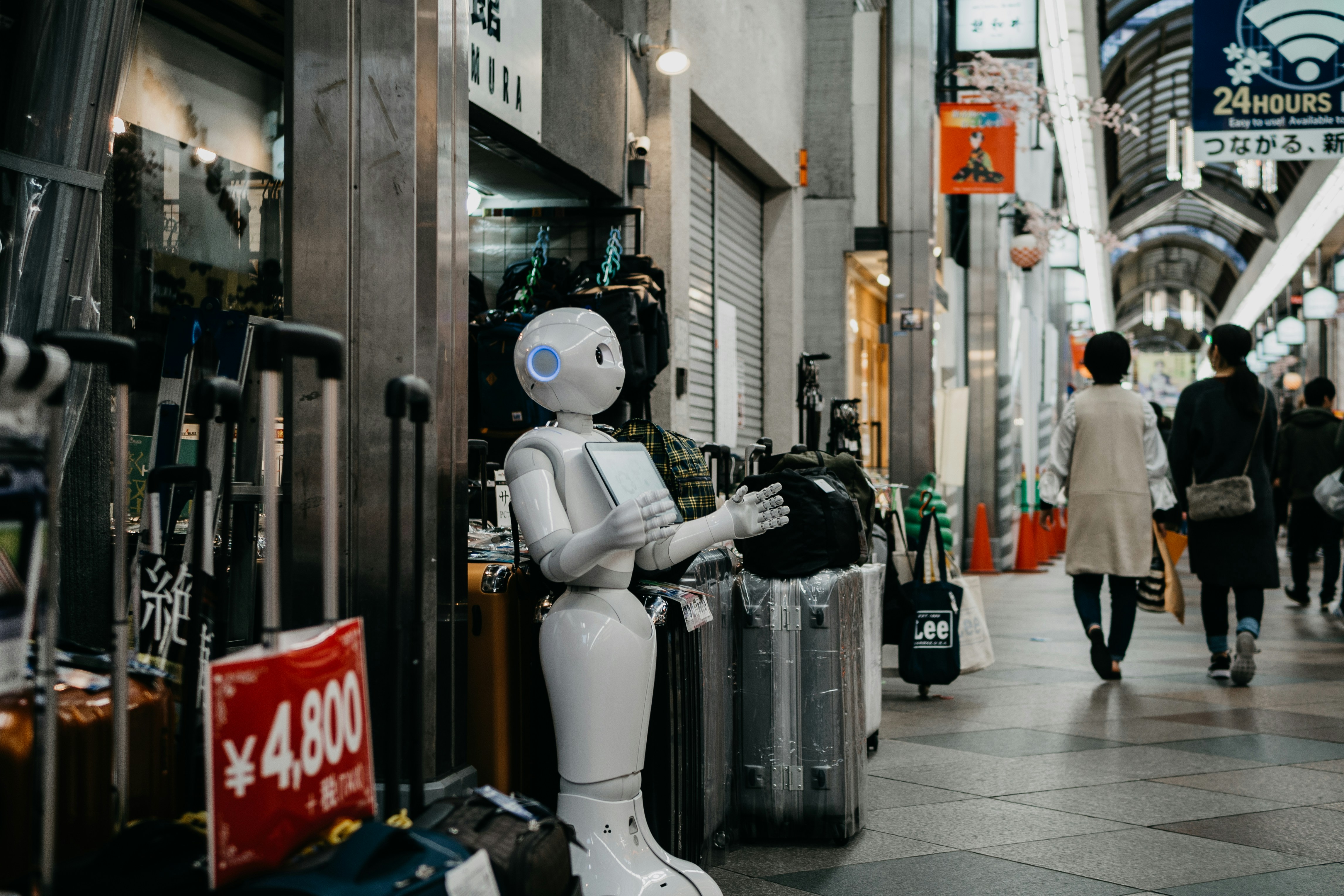Furthermore, AI has the ability to revolutionize the healthcare industry. With the increasing amount of medical data available, AI can analyze vast amounts of patient information to identify patterns and make predictions. This can help doctors in diagnosing diseases at an early stage, improving patient outcomes, and even potentially saving lives.
In the finance sector, AI algorithms can analyze market trends and patterns to make accurate predictions about stock prices and investment opportunities. This can assist investors in making informed decisions and maximizing their returns. Additionally, AI-powered chatbots can provide personalized financial advice and assistance to customers, enhancing the overall banking experience.
Transportation is another area where AI is making significant advancements. Self-driving cars, powered by AI algorithms, have the potential to reduce accidents and improve road safety. These vehicles can analyze real-time traffic data, make split-second decisions, and navigate through complex road conditions. Moreover, AI can optimize logistics and supply chain management, reducing costs and improving efficiency in the transportation industry.
In the manufacturing sector, AI-powered robots can automate repetitive and labor-intensive tasks, leading to increased productivity and reduced errors. These robots can also adapt to different production scenarios, making them versatile and efficient. Additionally, AI can be used for predictive maintenance, analyzing data from sensors to detect potential equipment failures before they occur, minimizing downtime and optimizing production processes.
Customer service is another domain where AI is transforming the way businesses interact with their customers. AI-powered chatbots can provide instant responses to customer queries, offering personalized recommendations and solutions. This not only improves customer satisfaction but also reduces the workload on customer service representatives. Furthermore, AI can analyze customer data to identify trends and preferences, enabling businesses to provide targeted marketing campaigns and enhance customer engagement.
Overall, AI has the potential to revolutionize various industries and domains, improving efficiency, accuracy, and decision-making. However, it is important to consider the ethical implications and potential risks associated with AI, such as privacy concerns and job displacement. As AI continues to evolve, it is crucial to strike a balance between harnessing its potential and ensuring responsible and ethical implementation.
Machine Learning
Machine Learning is a subset of AI that focuses on the development of algorithms and models that allow computers to learn and make predictions or decisions without being explicitly programmed. It involves training a model on a large amount of data and using that model to make predictions or take actions.
Machine Learning algorithms can be categorized into three main types: supervised learning, unsupervised learning, and reinforcement learning. In supervised learning, the model is trained on labeled data, where the desired output is known. This type of learning is commonly used in tasks such as classification, regression, and object detection. For example, in a supervised learning model for image classification, the model is trained on a dataset of labeled images, where each image is assigned a specific label. The model learns to associate certain features or patterns in the images with their corresponding labels, enabling it to classify new, unseen images accurately.
In unsupervised learning, the model learns patterns and relationships in unlabeled data. This type of learning is often used for tasks such as clustering, anomaly detection, and dimensionality reduction. For instance, in an unsupervised learning model for customer segmentation, the model analyzes a dataset of customer attributes without any predefined labels. It identifies underlying patterns or groups within the data, allowing businesses to understand their customer base better and tailor their marketing strategies accordingly.
Reinforcement learning is a type of learning where the model learns through trial and error by interacting with an environment and receiving feedback. This type of learning is commonly used in tasks such as game playing, robotics, and autonomous vehicle control. For example, in a reinforcement learning model for playing a game, the model takes actions in the game environment and receives rewards or penalties based on its performance. Through repeated interactions, the model learns to optimize its actions to maximize the rewards and achieve the desired outcome.
Machine Learning has been instrumental in solving complex problems and making predictions in various domains. It has applications in image and speech recognition, natural language processing, recommendation systems, fraud detection, and many other areas. For example, in the field of healthcare, Machine Learning algorithms have been used to analyze medical images and detect diseases such as cancer at an early stage. In the financial industry, Machine Learning models have been employed to detect fraudulent transactions and identify potential risks. Moreover, in the field of autonomous driving, Machine Learning techniques have been utilized to develop self-driving cars that can navigate through complex environments and make real-time decisions.
The Relationship between AI and Machine Learning
AI and Machine Learning are closely related fields that often go hand in hand. Machine Learning is a key component of AI, as it provides the algorithms and models that enable AI systems to learn and make decisions.
AI systems use Machine Learning techniques to analyze and interpret data, learn from patterns and trends, and make predictions or take actions. Machine Learning algorithms, on the other hand, benefit from AI by leveraging its capabilities to process and understand complex data and information.
While AI encompasses a broader range of technologies and techniques, Machine Learning is a specific approach within AI that focuses on learning from data. Machine Learning is often seen as a subset of AI, but it plays a crucial role in enabling AI systems to perform intelligent tasks.
One of the key advantages of using Machine Learning in AI systems is its ability to learn and adapt to new information. Machine Learning algorithms can analyze large amounts of data and identify patterns that humans might not be able to detect. This allows AI systems to make more accurate predictions and decisions based on the available data.
Another important aspect of the relationship between AI and Machine Learning is the concept of deep learning. Deep learning is a subset of Machine Learning that involves training artificial neural networks to learn and make decisions in a similar way to the human brain.
Deep learning has revolutionized many areas of AI, such as computer vision, natural language processing, and speech recognition. By using deep learning techniques, AI systems can process and understand complex information, enabling them to perform tasks that were previously only possible for humans.
Furthermore, the relationship between AI and Machine Learning extends beyond just the technical aspects. Both fields are closely intertwined in terms of research and development. Many AI researchers and practitioners also work in the field of Machine Learning, and vice versa.
Collaboration between AI and Machine Learning experts is crucial for advancing the capabilities of AI systems and developing new algorithms and models. This collaboration often involves sharing knowledge and expertise, conducting joint research projects, and participating in conferences and workshops.
In conclusion, AI and Machine Learning are highly interconnected fields that complement each other in many ways. Machine Learning provides the algorithms and models that enable AI systems to learn and make decisions, while AI enhances Machine Learning by providing the computational power and capabilities to process and understand complex data. The relationship between AI and Machine Learning extends beyond just the technical aspects and involves collaboration and knowledge sharing between experts in both fields. Together, AI and Machine Learning are driving advancements in technology and enabling the development of intelligent systems that can perform tasks previously only possible for humans.
Education:
AI and Machine Learning are also making a significant impact in the field of education. They are being used to develop intelligent tutoring systems that can provide personalized learning experiences to students. These systems can analyze student data, identify their strengths and weaknesses, and adapt the learning content accordingly. This helps in improving student engagement and academic performance.
Furthermore, AI and Machine Learning are being used in educational research to analyze large datasets and identify trends and patterns in student performance. This can help educators and policymakers make data-driven decisions to improve teaching methods and curriculum development.
Moreover, AI-powered virtual reality (VR) and augmented reality (AR) technologies are being integrated into educational experiences. These technologies can create immersive and interactive learning environments, allowing students to visualize complex concepts and engage in hands-on learning activities.
In addition, AI and Machine Learning can help marketers optimize pricing strategies by analyzing market trends and competitor data. They can also assist in demand forecasting, inventory management, and supply chain optimization, leading to improved efficiency and profitability.
Security and Surveillance:
AI and Machine Learning are being used in security and surveillance systems to enhance public safety. These technologies can analyze video feeds in real-time, detect suspicious activities or objects, and alert security personnel. They can also analyze social media data and other online sources to identify potential threats or criminal activities.
Furthermore, AI and Machine Learning can be used for facial recognition, fingerprint analysis, and voice recognition, improving the accuracy and efficiency of identification processes. This has applications in areas such as border control, access control systems, and law enforcement.
In conclusion, AI and Machine Learning have a wide range of applications across various industries and domains. From healthcare to education, finance to transportation, and manufacturing to marketing, these technologies are driving innovation and transforming the way we live and work.
AI in Healthcare:
One of the most promising areas for AI and Machine Learning is healthcare. With the ability to analyze large amounts of medical data, AI systems can assist in diagnosing diseases, predicting patient outcomes, and even designing personalized treatment plans. This has the potential to revolutionize healthcare by improving accuracy, efficiency, and patient care.
AI in Transportation:
The transportation industry is another sector that can greatly benefit from AI and Machine Learning. Self-driving cars, for example, rely on AI algorithms to navigate and make real-time decisions on the road. AI can also optimize traffic flow, reduce congestion, and improve transportation efficiency. Additionally, AI can enhance logistics and supply chain management, enabling companies to optimize routes, reduce costs, and improve delivery times.
AI in Agriculture:
The agricultural sector is also embracing AI and Machine Learning to improve crop yields, optimize resource allocation, and monitor plant health. AI systems can analyze satellite imagery, weather data, and soil conditions to provide farmers with real-time insights and recommendations. This enables farmers to make data-driven decisions, reduce waste, and increase productivity, ultimately contributing to food security and sustainable agriculture.
AI in Education:
In the field of education, AI and Machine Learning have the potential to personalize learning experiences, improve educational outcomes, and assist teachers in their instructional practices. AI-powered platforms can adapt to individual student needs, provide personalized feedback, and identify areas where additional support is required. This can lead to more effective and engaging learning environments, where students can learn at their own pace and receive tailored instruction.
AI in Cybersecurity:
With the increasing complexity and frequency of cyber threats, AI is becoming an essential tool in cybersecurity. AI algorithms can analyze network traffic, detect anomalies, and identify potential security breaches in real-time. By automating threat detection and response, AI can help organizations stay one step ahead of cybercriminals, protecting sensitive data and ensuring the security of digital systems.
AI in Customer Service:
AI-powered chatbots and virtual assistants are transforming customer service by providing instant support and personalized experiences. These AI systems can understand natural language, answer customer queries, and even anticipate their needs. By automating routine tasks and providing efficient self-service options, AI improves customer satisfaction, reduces wait times, and enables companies to deliver seamless customer experiences.
AI in Environmental Conservation:
AI and Machine Learning are also being used to address environmental challenges and promote sustainability. AI systems can analyze environmental data, such as satellite imagery and sensor readings, to monitor and manage natural resources, predict climate patterns, and detect environmental risks. By providing valuable insights and enabling proactive decision-making, AI can contribute to the preservation of ecosystems and the mitigation of climate change.
Conclusion:
The future of AI and Machine Learning is vast and holds immense potential for transforming various industries and domains. From healthcare to transportation, finance to agriculture, education to cybersecurity, AI is revolutionizing the way we live, work, and interact with technology. As advancements continue to unfold, it is crucial to address ethical considerations and ensure responsible development and deployment of AI systems. With the right approach, AI and Machine Learning have the power to enhance our lives, drive innovation, and create a more sustainable future.
The Future of Artificial Intelligence and Machine Learning
Strategies for Energy Efficiency and Sustainability in Data Centers
Managing E-Waste: Prominent Technologies and Solutions
The Benefits and Challenges of Smart Grid Technology
Ocean Cleanup Technologies: Addressing Plastic Pollution in the Oceans
Sustainable Software Development: Prioritizing Green Design, Agile Development, Open Source, CI/CD, and User-Centric Design
Assistive Technologies: Enhancing Independence and Quality of Life for Individuals with Disabilities
Digital Inclusion Technologies: Bridging the Digital Divide and Promoting Equity














